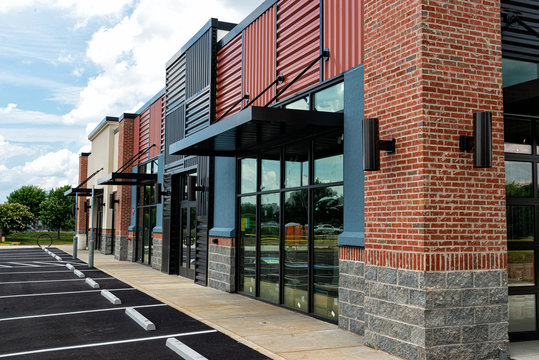
For grocery operators, the store footprint is no longer just a distribution point, it is the heart of the customer experience. But behind every fresh produce display, beverage case, and checkout lane is a complex network of assets that must run flawlessly to keep margins intact. With food costs volatile, labor markets tight, and consumer expectations rising, facility management has emerged as one of the most critical levers for protecting grocery profitability.
Rising Costs, Shrinking Margins
The numbers tell a stark story. Direct store operating expenses for grocers increased 12.7 percent over the last two years. Repairs and maintenance alone rose 17.3 percent from 2022 to 2024. By 2024, facility expenses outpaced overall expense growth, climbing 11.8 percent in a single year.
At the same time, grocery margins remain razor-thin, typically hovering between 1 and 3 percent. This means a 1 percent increase in facility spend can wipe out profit across dozens of stores. The urgency is clear: every hidden invoice, delayed repair, or poor-quality fix has a direct impact on the bottom line.
The Customer Experience Connection
Facility reliability is no longer just an operations issue, it is a customer loyalty driver. Cold cases that underperform or signage that fails do more than inconvenience shoppers. Studies show 82 percent of customers are influenced by store design and upkeep when deciding whether to enter. Once inside, refrigeration and food equipment become the backbone of fresh offerings that drive competitive differentiation.
Downtime is costly. In one grocery case study, 19 percent of break-fix work orders recurred within 30 days. A single site accumulated $22,687 in repeat repair spend across trades in one year. For customers, repeat failures undermine confidence in freshness and food safety. For operators, callbacks quietly erode margins.
The Inefficiency Problem
Much of the cost challenge lies in inefficiencies. Benchmarks reveal that average time to complete a work order in grocery is 14.7 days, compared to a best-in-class benchmark of 8.7 days. Each additional day of downtime means higher risk of spoilage, lost sales, and customer dissatisfaction.
Hidden costs appear in invoices as well. Overcharges on labor, parts markups, and unnecessary fees are widespread. In some portfolios, excess costs average 14 percent on materials and 9 percent on labor. These percentages may seem small, but across thousands of work orders per year, they add up to millions in waste.
Technology as a Margin Protector
Next-generation facilities platforms are changing how grocery operators control costs and ensure reliability. VixxoLink, for example, integrates work order management with patented invoice validation and AI-enabled technician support.
- Automated invoice audits prevent inflated billing and duplicate tickets.
- AI-driven troubleshooting tools improve first-time fix rates, cutting callback volume and downtime.
- Dashboards and analytics give leaders real-time visibility into work order trends, technician performance, and asset uptime.
One convenience portfolio using this approach delivered $2.6 million in direct cost savings in 12 months through invoice audits and cost validation. Similar results are achievable in grocery, where high-volume work orders and critical refrigeration assets amplify every dollar saved.
Preventive Maintenance and Energy Savings
Preventive maintenance is another underutilized but powerful margin lever in grocery. Research shows that unplanned maintenance costs 3 to 9 times more than preventive care.
For refrigeration, preventive programs reduce emergency repair volume and extend equipment life. For HVAC, they drive energy efficiency gains of 12 to 18 percent annually. One study found that energy costs dropped 16.7 percent in year one when preventive maintenance was performed, but spiked back to baseline within two quarters when programs were canceled.
These savings are particularly meaningful in grocery, where refrigeration and HVAC can account for 50 percent or more of total energy consumption. A stable preventive cycle not only reduces emergency spend but also protects food safety and customer comfort.
A New Facilities Scorecard for Grocery
For grocery leaders, the path forward means building a facilities strategy around visibility and accountability. Traditional scorecards that track only total spend are not enough. The next era of grocery facilities management must focus on:
- Downtime and callbacks – measure repair recurrence within 30 days and link downtime to lost revenue.
- Invoice accuracy – track savings delivered through audits and validation.
- Energy efficiency – monitor year-over-year consumption and cost per store, adjusted for climate.
- First-time fix rates – benchmark technician performance to ensure issues are resolved right the first time.
- Administrative efficiency – reduce manual oversight through automation, freeing facilities managers to focus on strategy.
These metrics shift the conversation from cost control to performance management. They also provide a clearer line of sight into how facilities directly support margin protection.
The Leadership Imperative
For VPs of Facilities and grocery executives, the mandate is clear. Facilities must be seen not as a cost center but as a strategic margin protector. The pressures of inflation, labor shortages, and customer expectations leave no room for inefficiency.
The leaders who succeed will be those who embrace transparency, invest in preventive programs, and align facilities outcomes with customer loyalty and revenue. Facilities cannot be the last thing addressed in board discussions. They are too central to both profit and brand.
Conclusion
Grocery is entering a new era where facility management directly influences competitive position. Rising costs and thin margins make traditional reactive approaches unsustainable. Downtime, callbacks, and hidden invoice overages are not just operational problems, they are profit leaks.
With data-driven oversight, preventive strategies, and smarter technology, facilities leaders can redefine their role from cost controllers to growth enablers. The stores that deliver fresh food, reliable experiences, and consistently safe environments will be the ones that win customer loyalty.
For grocery operators, protecting margins begins with protecting facilities. The path forward is clear: measure what matters, embrace technology, and make facilities reliability a core part of the customer promise.
Let’s talk.
Get in touch and fill out the contact form below!




